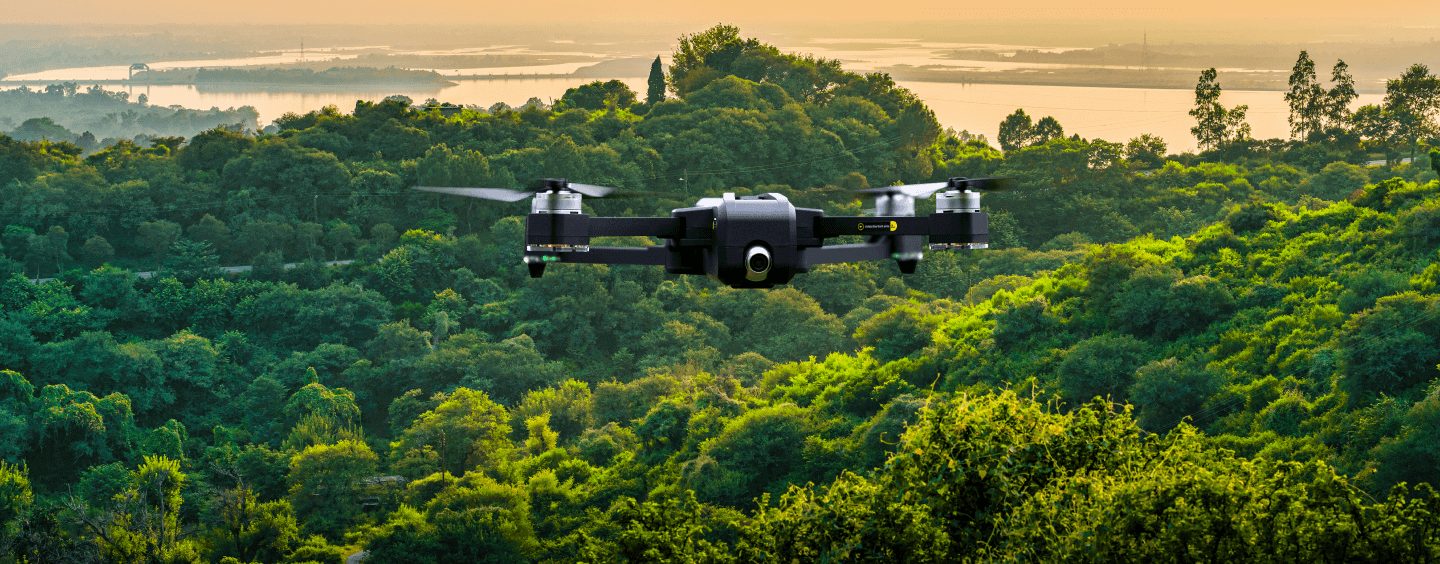The ongoing fight for the survival of the planet’s precious and endangered ecosystems is an unrelenting one. Persistent threats from poachers, illegal loggers, habitat destruction, and climate change continue to push countless species towards extinction.
However, amid these challenges, artificial intelligence (AI) has emerged as a powerful tool offering new solutions to better protect wildlife and forests. From detection drones and acoustic monitoring to predictive analytics and satellite imagery, AI is transforming conservation efforts worldwide.
Eyes in the Skies: AI-Powered Drones Detect Threats
Conservation groups are increasingly utilizing AI-equipped drones for large area surveillance. These eyes in the skies use object recognition and other AI technologies to automatically identify potential poaching and illegal logging activities across vast landscapes.
Initiatives like Rainforest Connection deploy solar-powered devices called Guardian devices in remote rainforests. Embedded with AI algorithms, these devices listen for chainsaw noises, gunshots, vehicles, or even specific animal calls. Detected threats automatically trigger real-time alerts to law enforcement rangers.

Similarly, the Lindbergh Foundation’s Air Shepherd program uses military-grade drones to detect poachers in southern Africa. Their fixed-wing UAVs can fly for up to 12 hours, using AI to spot humans and vehicles across hundreds of kilometers.
Predict and Prevent with AI Analytics
AI conservation tools provide more than just reactive threat detection. Sophisticated machine learning algorithms can uncover hidden insights from vast datasets – including past poaching incidents, satellite imagery, weather patterns, and socioeconomic factors.
Analyzing this data enables conservation groups to create highly accurate predictive risk maps, pinpointing which areas or species are most vulnerable to future threats. By deploying resources proactively to these hotspots, authorities stay one step ahead of the poachers.
For instance, Vulcan Inc. is developing Domain Awareness Systems (DAS) that assimilate multiple data streams to assess threats across African landscapes in real-time. Their machine learning models become more intelligent over time, enabling continuously improved predictions.
Empowering Rangers with AI Assistants
Advanced AI and computer vision technologies are also being used to equip rangers with smart mobile tools for more effective and accurate wildlife monitoring.
Intel and Accenture developed Ranger AI, an app that helps rangers identify animals down to individual levels using camera trap images. This allows accurate population counts and analysis of migration routes, territorial behaviors, social hierarchies and even animal health.

Such AI-powered mobile assistants enhance efficiencies while providing invaluable historical data to inform long-term conservation strategies.
Tracking Endangered Species
Beyond general monitoring, AI analytics enable focused tracking and protection initiatives for endangered species populations.
Acoustic monitoring devices equipped with AI algorithms can identify vocalizations of rare animals like pangolins, tigers or chimpanzees. This allows conservationists to pinpoint their locations and mobility patterns, enabling highly targeted protection efforts.
Visual recognition technology can also detect and analyze poaching traps and snares. Rangers are using smart phone apps like TRAFFIC to photograph and instantly identify illegal contraptions. This allows for rapid dismantling to avoid capturing endangered animals.
Fighting Back Against Illegal Logging
Safeguarding the world’s forests is crucial for climate change mitigation and biodiversity preservation. AI is playing an invaluable role by identifying illegal logging activities faster than ever before.
Conservation drones equipped with high resolution cameras and object recognition can automatically spot unauthorized logging trucks or machinery operations across hundreds of kilometres of dense forests.
Likewise, AI-enabled analysis of satellite imagery can identify new roads, infrastructure and forest clearing patterns. Groups like Rainforest Connection and IMAFLORA are developing deforestation alert systems that detect illegal logging in Brazil and Peru in real-time.
These AI monitoring capabilities accelerate intervention by authorities and help hold illegal loggers accountable. The fast-evolving nature of AI also enables conservation groups to continuously improve detection accuracies over time.
Ongoing Challenges for AI Conservation Efforts
There is tremendous enthusiasm about the huge potential of AI to better protect endangered species and ecosystems. However, AI conservation tools also face ongoing challenges.
Ensuring rigorous testing and validation of detection accuracy is crucial, especially when enforcement actions are implicated. Biases hidden within algorithms and training data also need to be proactively addressed.
There are also valid ethical concerns around AI-gathered data, including privacy protection and transparent use policies. Surveillance capabilities require thoughtful oversight to prevent potential harms.
Geopolitical issues pose further barriers, as many threatened ecosystems span country borders with varying inter-governmental cooperation. Military conflicts and corruption also weaken conservation efforts in certain regions.
Despite these hurdles, collaborative partnerships between conservation groups, technology companies, academics and governments provide reasons for optimism. With responsible development and deployment of conservation AI worldwide, huge potential exists for protecting biodiversity.
The Future of AI for Wildlife Conservation
The use of AI for ecologial preservation remains in its early stages, yet is already demonstrating profound potential across critical domains:
- Predictive risk modelling
- Real-time threat detection
- Accelerated species identification
- Enhanced individual animal tracking
- Improved ecosystem and population monitoring
- Evidence gathering for enforcement actions
As algorithms, sensor technologies and drone platforms continue advancing rapidly, AI’s role in conservation efforts globally will only increase. Scientists also foresee a future with autonomous AI systems able to intuitively respond to emerging threats in real-time.
However, the most important factor remains dedicated humans developing thoughtful approaches for implementing AI ethicaly and responsibly. With compassionate wisdom, conservation AI efforts can transform humanity’s relationship with nature – preserving precious biodiversity for generations to come.
















Add Comment